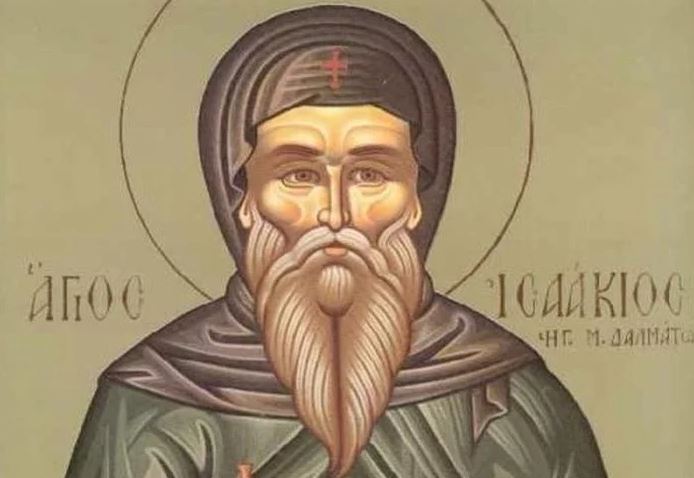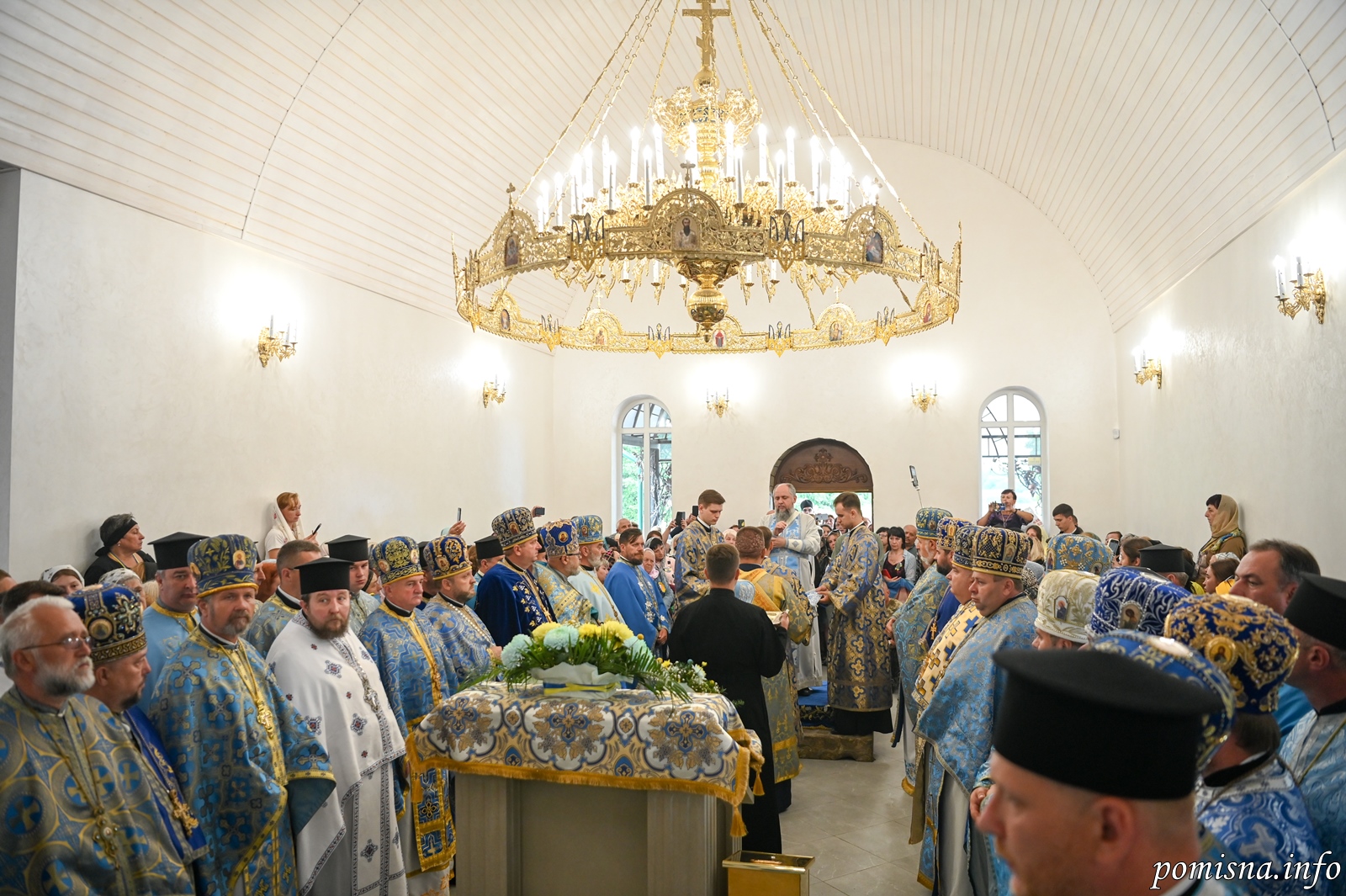Venerable Isaac, Founder of Dalmátos Monastery at Constantinople (30 May)


Saint Isaac lived during the IV century, received the monastic tonsure and pursued ascetic labors in the desert. During the reign of Emperor Valens (364-378), a zealous adherent of the Arian heresy, there was a persecution of the Orthodox, and churches were closed and destroyed.
Hearing of the persecution, Saint Isaac left the wilderness and went to Constantinople to console and encourage the Orthodox, and to fight against the heretics. At that time, barbarian Goths along the Danube River were making war against the Empire. They seized Thrace and advanced toward Constantinople.
When Emperor Valens was leaving the capital with his soldiers, Saint Isaac cried out, “Emperor, reopen the churches of the Orthodox, and then the Lord will aid you!” But the Emperor, disdaining the Saint’s words, continued confidently on his way. The Saint repeated his request and prophecy three times. The angry Emperor ordered Saint Isaac to be thrown into a deep ravine, filled with thorns and mud, from which it was impossible to escape.
Saint Isaac remained alive by God’s help, and when he emerged he overtook the Emperor and said, “You wanted to destroy me, but three Angels pulled me from the mire. Hear me, reopen the churches for the Orthodox and you shall defeat the enemy. If you do not heed me, then you shall not return. You will be captured and burnt alive.” The Emperor was astonished at the Saint’s boldness and ordered his attendants Saturninus and Victor to seize him and hold him in prison until his return.
Saint Isaac’s prophecy was soon fulfilled. The Goths defeated and pursued the Greek army. The Emperor and his Arian generals took refuge in a barn filled with straw, and the attackers set it ablaze. After news of the Emperor’s death was received in Constantinople, Saint Isaac was released and honored as a prophet.
Then the holy Emperor Theodosios the Great (379-395) came to the throne. On the advice of Saturninus and Victor, he summoned the Elder, treating him with great respect. Obeying his instructions, he banished the Arians from Constantinople and restored the churches to the Orthodox. Saint Isaac wanted to return to his desert, but Saturninus and Victor begged him not to leave the city, but to remain and protect it by his prayers.
Saturninus built a monastery for Saint Isaac in Constantinople, where monks gathered around him. Saint Isaac was the Monastery’s Igoumen and spiritual guide. He also nourished laypeople, and helped many of the poor and suffering.
When he had reached an advanced age, Saint Isaac made Saint Dalmátos (August 3) Igoumen. The Monastery was later named for Dalmátos.
Saint Isaac reposed in the year 383, and his memory is also celebrated on March 22.
The righteous Isaacius was from Syria and came to Constantinople in 374, excelled in the monastic life, and departed to the Lord in 396. According to tradition, his monastery was built by Dalmatus the Patrician, a nephew of Saint Constantine the Great. But many say that the monastery was founded by Saint Isaacius, and afterwards took the name of the Abbot Dalmatus who succeeded Saint Isaacius (see Aug. 3 for an account of the life of Saints Isaacius and Dalmatus). Yet others maintain that it received its name from both of these, and that is why its name in Greek is in the plural. According to Zonaras, the Iconoclast Emperor Constantine Copronymus later turned this monastery into a barracks: “And as for the Monastery called Palmatus, which is ancient and the oldest of all those in Constantinople, after he had expelled the monks, [the Emperor] made it a barracks for soldiers” (Chronicle, XV, 8). The Third Ecumenical Council raised its abbot to the rank of archimandrite and exarch of the prominent monasteries of the imperial city. The famous Cathedral of Saint Isaac in Saint Petersburg is dedicated to this Saint.
During the reign of Emperor Valens, the Arians, with the emperor’s assistance, vehemently persecuted the Orthodoxy. Hearing of this persecution, Isaac, a hermit somewhere in the east, left the wilderness and came to Constantinople to encourage the faithful and denounce the heretics. At the same time, the Emperor Valens departed to the north with his army against the Goths, who had come down from the Danube toward Thrace. Isaac came before the emperor and said to him: “O Emperor, open the churches of the Orthodox, and God will bless your path.” The emperor ignored the elder and proceeded on his way. The following day, Isaac ran out again before the emperor, and again he repeated his warning.
The emperor almost heeded the elder, but a certain advisor of his, a follower of the Arian heresy, prevented him. Isaac ran out before the emperor on the third day, grabbed the emperor’s horse by the reins, begged the emperor to grant freedom to the Church of God, and threatened him with divine retribution if he acted contrary to his petition. The enraged emperor ordered that the elder be thrown into a chasm of mud and thorns. However, three angels appeared and pulled the elder out of the chasm. On the fourth day Isaac came before the emperor and prophesied a terrible death for him if he did not grant freedom to the Orthodox: “I am speaking to you, O Emperor: You will lead the army against the barbarians, but you will not be able to endure their attack. You will flee from them, but you will be captured and burned alive.”
Thus, it happened. The barbarians cut down the Greek army like grass, but the emperor, with his Arian advisor, fled and hid in a basket. The barbarians arrived at that place and, learning where the emperor was, surrounded the basket and set it afire. Both the emperor and his advisor were burned alive. Following this, Theodosius the Great was crowned emperor. Theodosius, who heard about the prophecy of Isaac and its fulfillment, summoned Isaac and prostrated himself before him. Since peace reigned in the Church and the Arians were exiled, Isaac wanted to return to his wilderness, but he was persuaded to remain in Constantinople.
An aristocrat, Saturninus by name, built a monastery for the Elder Issac, where he lived a life of asceticism until his death, working many miracles. The monastery overflowed with monks and became a great monastery. Before his death, Isaac appointed Dalmatus, his disciple, as abbot, after whom this monastery was later named. The God-pleasing Elder Isaac entered into eternity in the year 383 A.D., to rejoice in the vision of the face of God.
Apolytikion of Isaacius of Dalmatus
Plagal of the Fourth Tone
The image of God, was faithfully preserved in you, O Father. For you took up the Cross and followed Christ. By Your actions you taught us to look beyond the flesh for it passes, rather to be concerned about the soul which is immortal. Wherefore, O Holy Isaakios, your soul rejoices with the angels.
Source: oca.org / goarch.org / westserbdio.org




